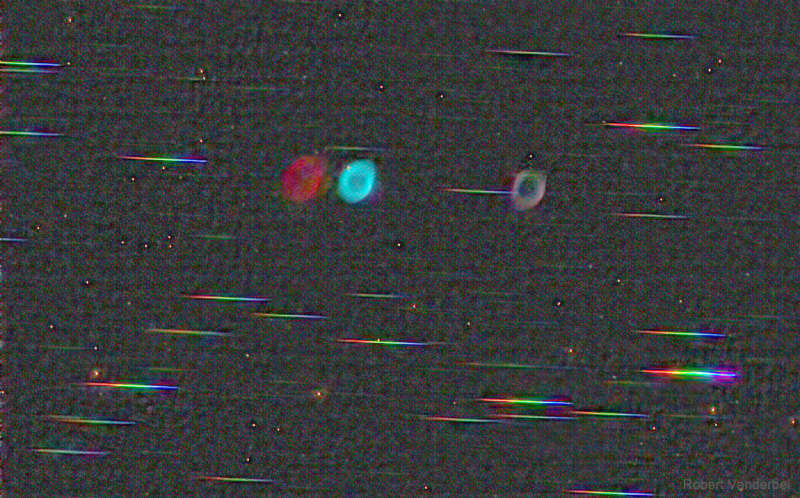
|
Credit & Copyright: Robert Vanderbei
(Princeton U.)
Explanation:
What if you could see, separately, all the
colors of the Ring?
And of the surrounding stars?
There's technology for that.
The featured image shows the
Ring Nebula (M57)
and nearby stars through such technology: in this case, a
prism-like
diffraction grating.
The
Ring Nebula is seen only a few times
because it emits light, primarily, in only a few colors.
The two brightest emitted colors are
hydrogen
(red) and
oxygen (blue), appearing as nearly overlapping images to the left of the image
center.
The image just to the right of center is the
color-combined icon normally seen.
Stars, on the other hand, emit most of their light in colors all across the
visible spectrum.
These colors,
combined, make a nearly continuous streak --
which is why stars appear accompanied by multicolored bars.
Breaking object light up into colors is
scientifically useful because it can reveal the
elements that compose that object,
how fast that object is moving, and
how distant that object is.
|
January February March April May June July August September October November December |
| ||||||||||||||||||||||||||||||||||||||||||||||||
NASA Web Site Statements, Warnings, and Disclaimers
NASA Official: Jay Norris. Specific rights apply.
A service of: LHEA at NASA / GSFC
& Michigan Tech. U.
Based on Astronomy Picture
Of the Day
Publications with keywords: M 57 - Ring Nebula
Publications with words: M 57 - Ring Nebula
See also:
